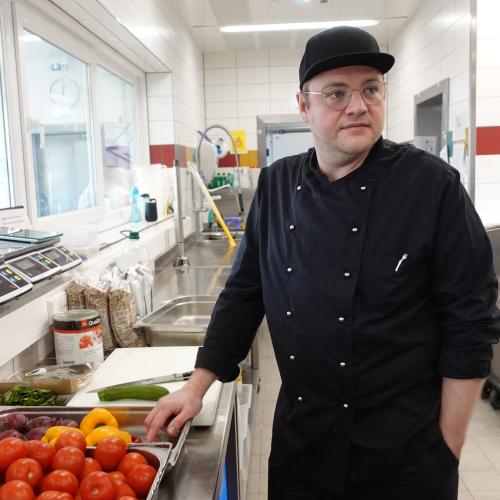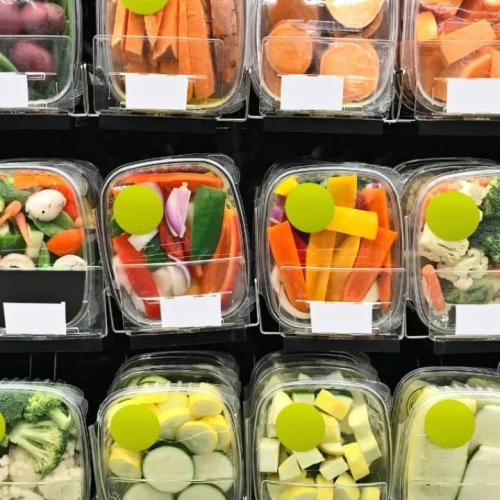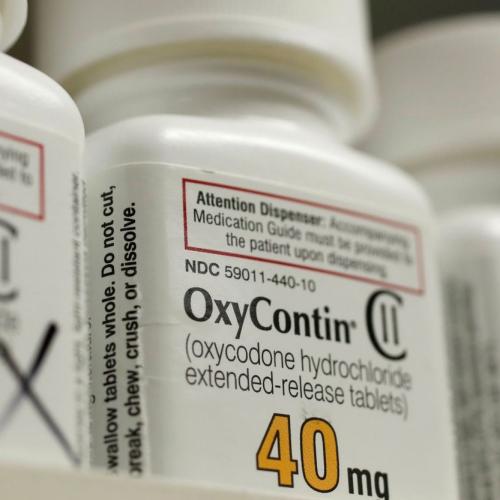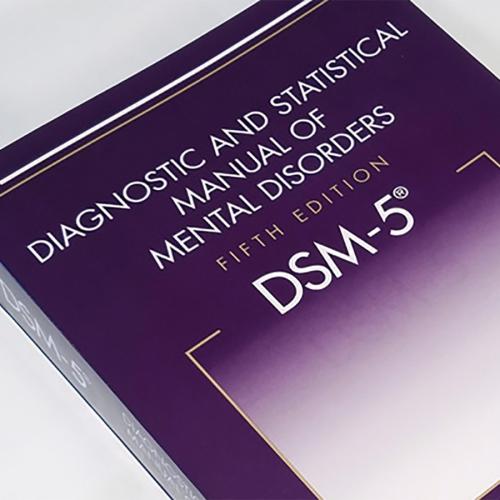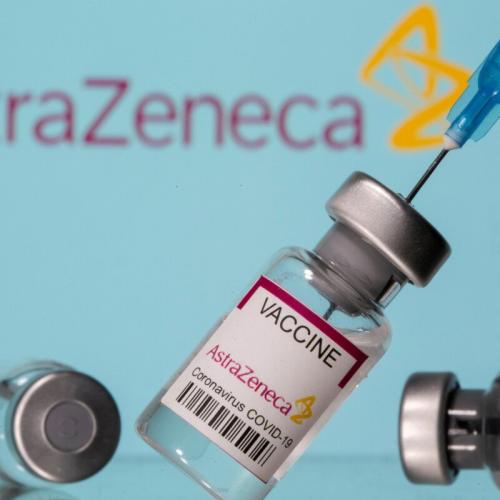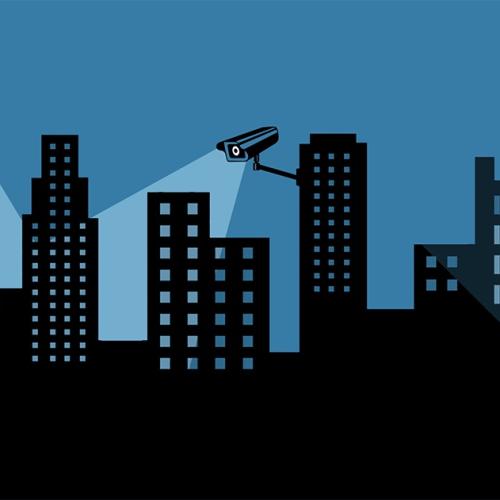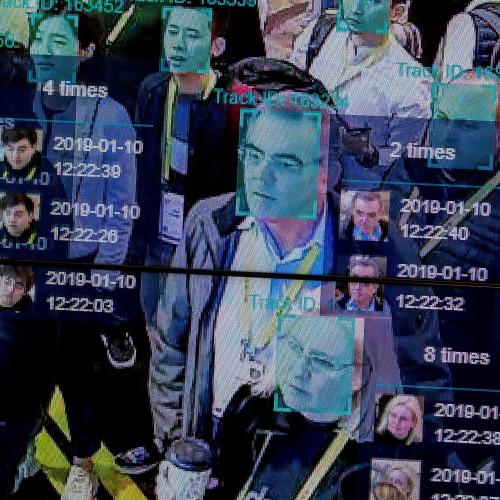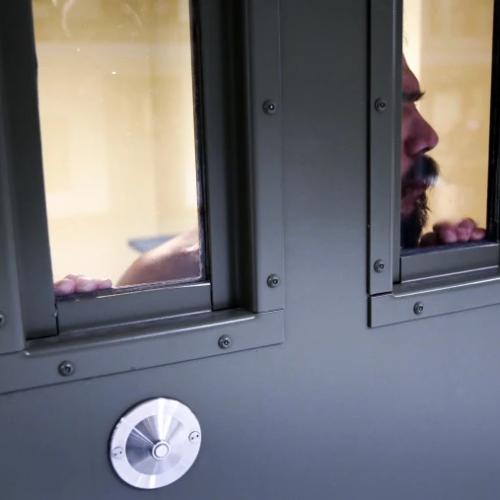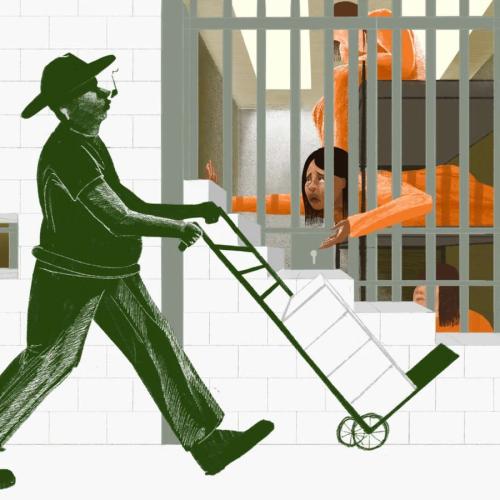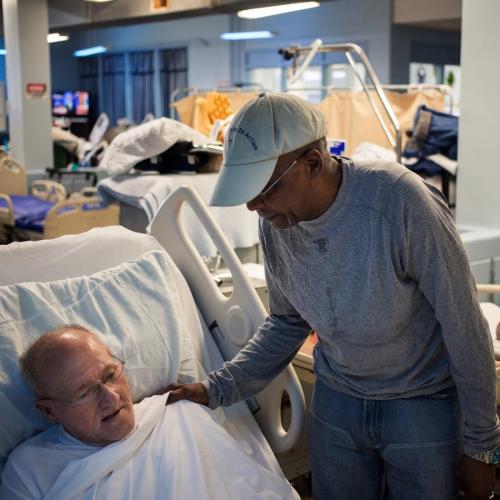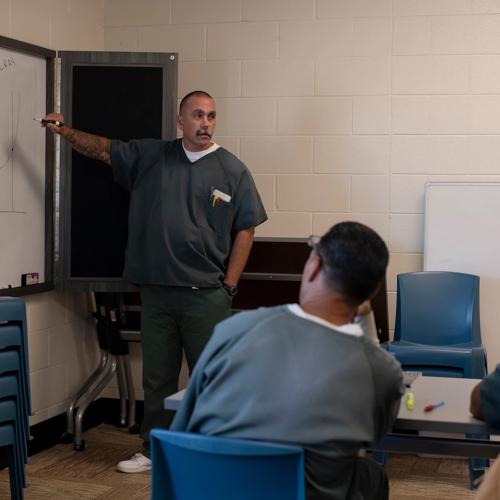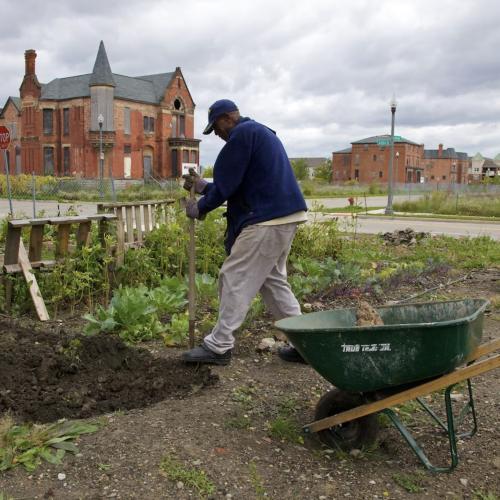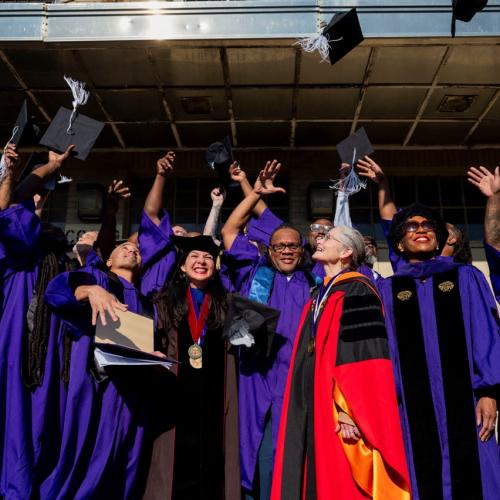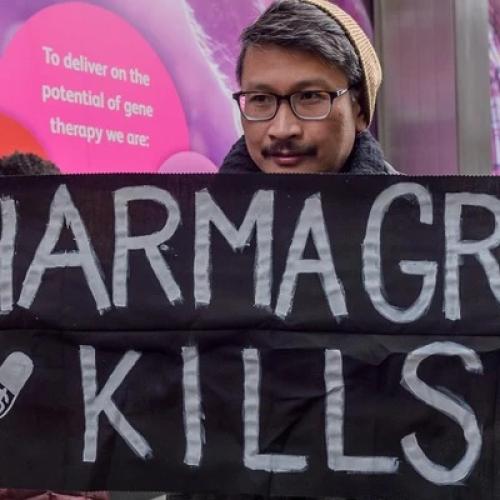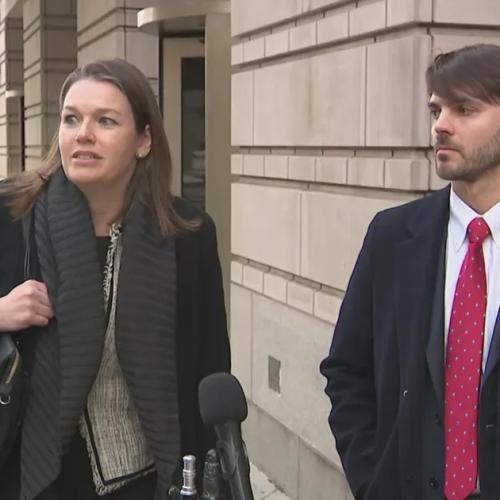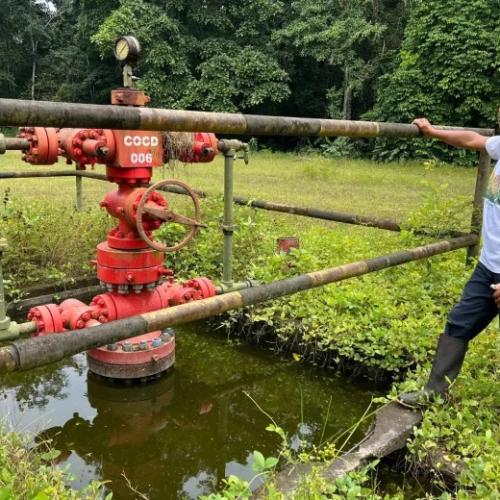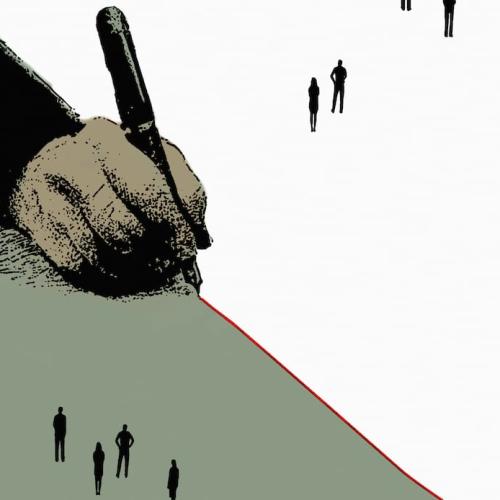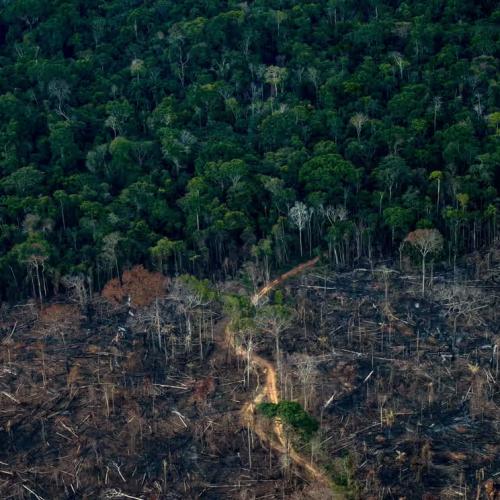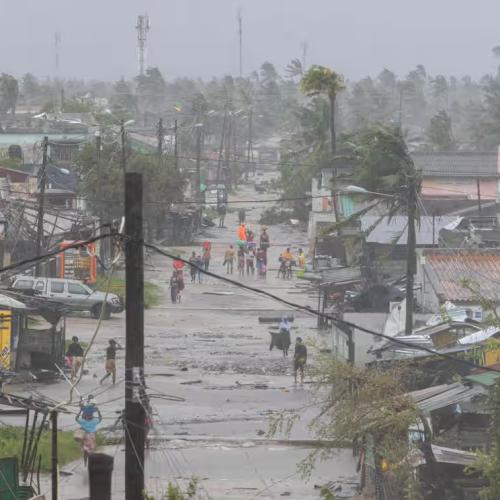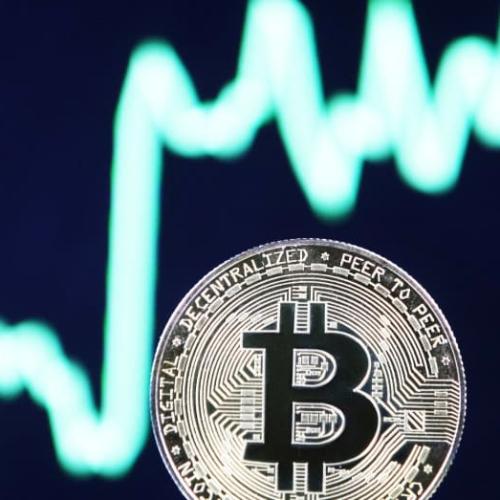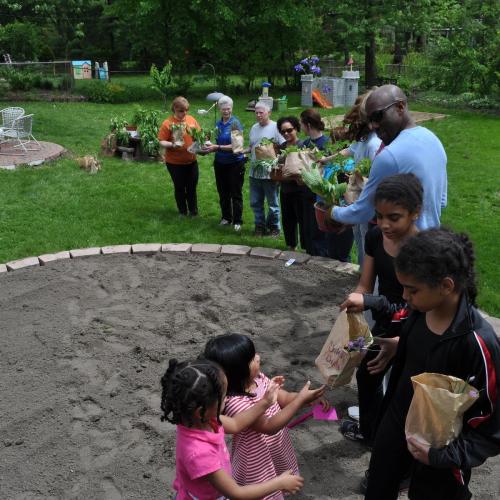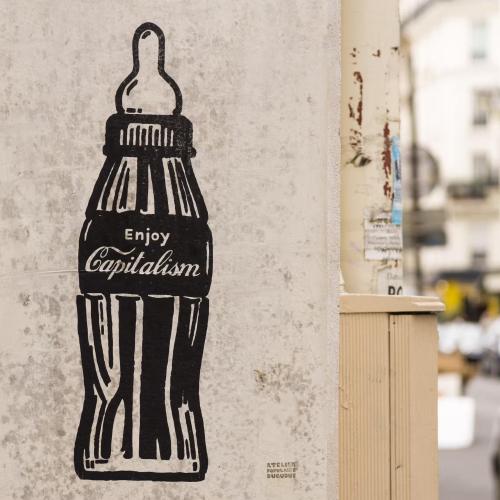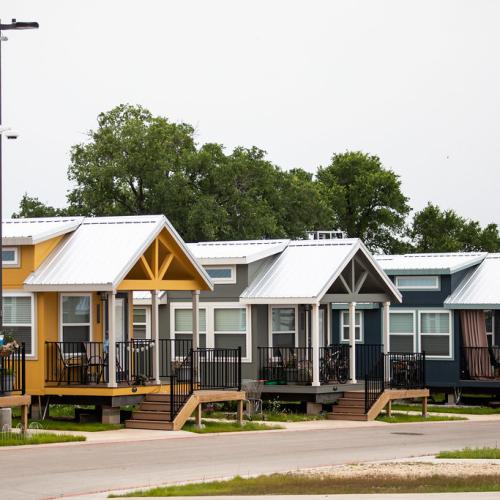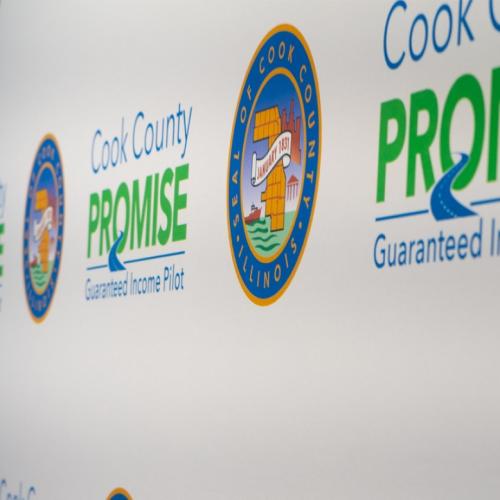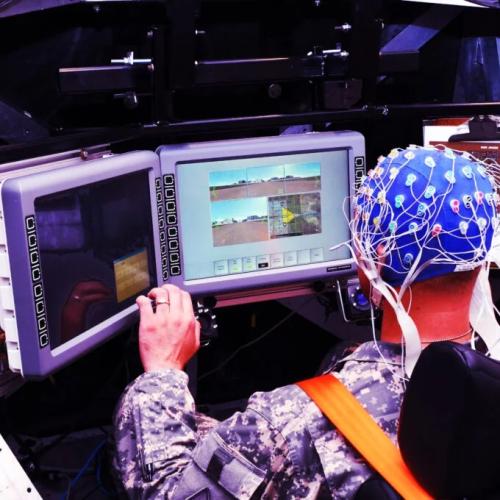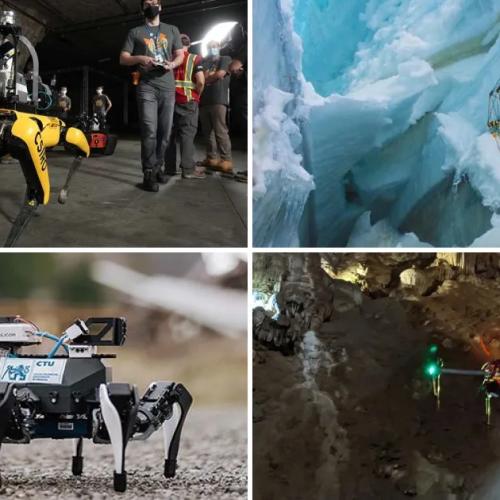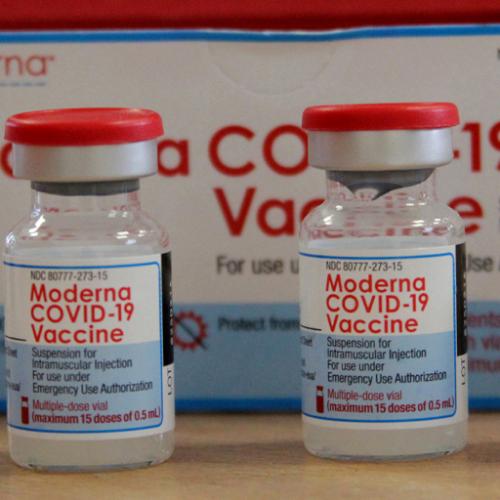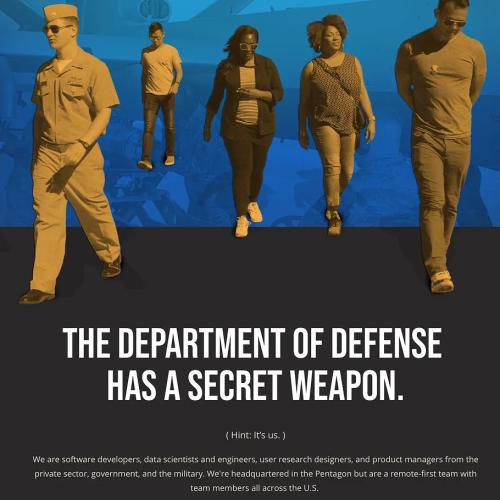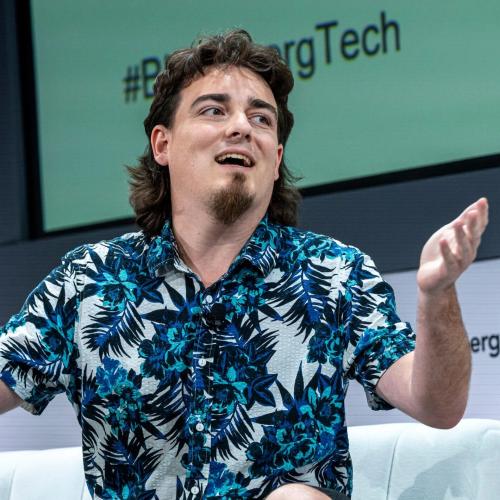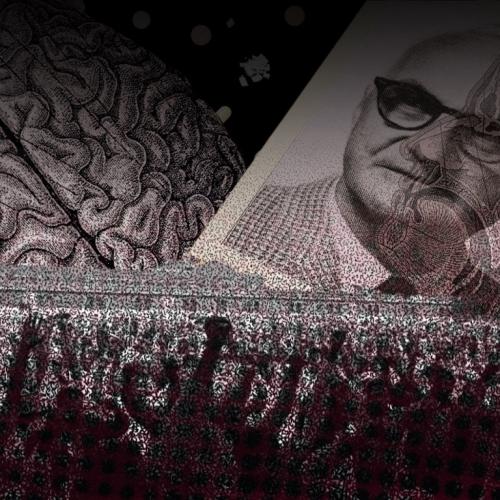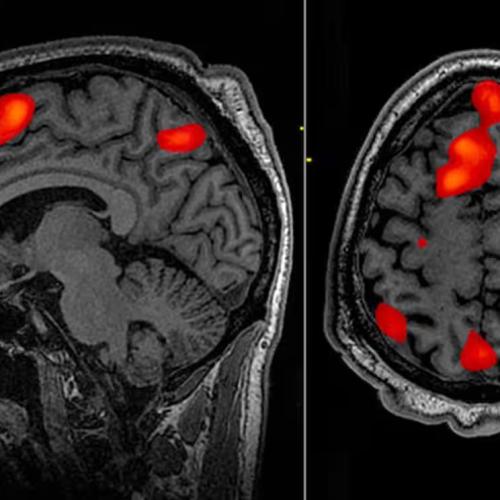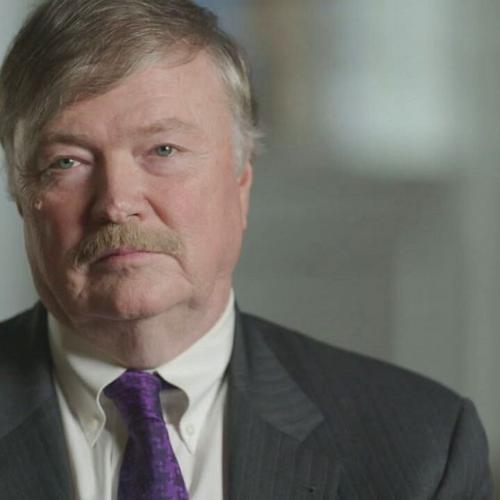Inspirational News Articles
Below are key excerpts of some of the most inspiring news articles from reliable news media sources. If any link fails to function, a paywall blocks full access, or the article is no longer available, try these digital tools.
For further exploration, delve into our Inspiration Center.
Libraries arent just for books, or even e-books, anymore. In Sacramento, where people can check out sewing machines, ukuleles, GoPro cameras and board games, the new service is called the Library of Things. Services like the Library of Things and the Stuff-brary in Mesa, outside Phoenix, are part of a broad cultural shift in which libraries increasingly view themselves as hands-on creative hubs, places where people can learn new crafts and experiment with technology like 3-D printers. Last year, the Free Library of Philadelphia pulled together city, state and private funds to open a teaching kitchen, which is meant to teach math and literacy through recipes and to address childhood obesity. It has a 36-seat classroom and a flat-screen TV for close-ups of chefs preparing healthy dishes. Libraries are looking for ways to become more active places, said Kate McCaffrey of the Northern Onondaga Public Library, outside Syracuse, which lends out its garden plots and offers classes on horticulture. People are looking for places to learn, to do and to be with other people. The Ann Arbor District Library has been adding to its voluminous collection of circulating science equipment. It offers telescopes, portable digital microscopes and backyard bird cameras, among other things - items that many patrons cannot afford to buy. In Sacramento, each item in the Library of Things bears a bar code, since the Dewey Decimal System was not intended for sewing machines or ukuleles.
Note: Explore a treasure trove of concise summaries of incredibly inspiring news articles which will inspire you to make a difference.
More than a half-dozen black churches have burnt to the ground in the American south since the killing of nine black people inside a historic African American church in Charleston, South Carolina, last month. Since the shooting, authorities have ruled at least three of the church fires to be arson. In the wake of those arsons, dozens of religious institutions and nonprofits have raised cash for those churches. To the surprise of some pastors, the recovery effort is being partially led by Jewish and Muslim leaders, who understand both the sanctity of houses of worship and the seriousness of attacks against them. Faatimah Knight, a 23-year-old black Muslim student, has helped organize a group of Muslim nonprofits including Ummah Wide, the Muslim Anti-Racism Collaborative, and the Arab American Association of New York. With one week left, the crowd-funded campaign has raised more than $58,000 from over 1,300 donors. Rabbi Susan Talve, who heads the Central Reform Congregation in St Louis, Missouri, says a broad coalition of more 150 religious institutions has raised more than $150,000 toward its $250,000 goal to help rebuild black churches. She says the groups involved with the Rebuild the Churches Fund began working together after the death of unarmed black teenager Michael Brown in Ferguson. We believe the church is the heart and soul of a community, Talve says. So we wanted to help them out. If you burn them down with hate, were going to build them back with love ... better and stronger.
Note: Explore a treasure trove of concise summaries of incredibly inspiring news articles which will inspire you to make a difference.
What if there were an alternative corporate model ... that was still globally competitive but empowered local workers and addresses income inequality? Mondragon Corporation [is] a federation of 103 worker-owned cooperatives based in the Basque region of Spain. The corporation employs more than 74,000 people around the world. About 60,000 are worker-owners. Managers at Mondragon cannot make more than six times the salary of their lowest paid workers. YES! talked with Josu Ugarte, the president of Mondragon International. UGARTE: We combine economic issues with social ones. Apart from sharing profits, ownership, and management, we have three key values: solidarity, inter-cooperation, and social transformation. Our solidarity in terms of salaries changes the distribution of wealth in society. If the Basque region in Spain were a country, it would have the second-lowest income inequality in the world. This is social transformation. One thing I want to point out is that were a business, so we need to remain competitive. If we dont do that, then we cannot create and share value. There are differences in the profitability of different companies within Mondragon. For example, if one company is turning a profit every year, then they are giving 30 percent of that profit to Mondragon. [If] another company gives nothing because they are not making a profit, [then] that can seem unfair. But the company that is successful today may have needed help 20 years ago. That is ... one of the keys of our success.
Note: Explore a treasure trove of concise summaries of incredibly inspiring news articles which will inspire you to make a difference.
A nine-year old girl from Bremerton, Wash. is making a difference in her local community. In a report with KING 5 News, Hailey Ford is shown using a power tool to drive nails into the roof what looks like a miniature house. The structure is the first of 11 planned shelters she [is] building for the homeless in her area. She tells the reporter that her friend Edward is homeless and needs a dry place to sleep at night. When she realized that she could do something about it, she began piecing together a plan to build "mobile sleeping" shelters, as she calls them. The shelters come complete with insulation, tar paper, and windows, barriers that will keep out the elements and lock in the warmth. Hailey isn't the only kid acting with compassion. Five-year old Josiah Duncan had a similar reaction when he saw a hungry-looking homeless man outside of a Waffle House in Prattville, Ala., last month. The little boy began asking his mother about the man's appearance, clearly troubled. She explained that the man was homeless and Josiah requested that they buy him a meal. His mother obliged. Before the man could eat, Josiah insisted on saying a blessing. "The man cried. I cried. Everybody cried," his mother told WFSA. Other children have taken Hailey and Josiah's kindness a few steps further. Hannah Taylor, a Canadian from Winnipeg, Manitoba, founded the Ladybug Foundation when she was only eight years old. In her mission statement Hannah says, "I believe that if people know about homelessness that there are people living without a home they will want to help.
Note: Explore a treasure trove of concise summaries of incredibly inspiring news articles which will inspire you to make a difference.
Have you heard the story about the Muslim community in Belgium that raised money to restore a local synagogue? Probably not. But it is really important that you do. The oldest Jewish house of worship in Belgium, Synagogue d'Arlon, had been forced to close its doors because of structural problems with the building. The Jewish congregation was short of the funds needed to re-open, [so] a local Muslim community took it upon themselves to call for donations at Friday prayer - even though they themselves do not have a permanent mosque and pray in a converted house. The movement ... spread to Muslims across Belgium who contributed to the fund. In a communiqu released by the Association of Muslims of Arlon (AMA), Hajib el-Hajjaji urged fellow Muslims to contribute. The Muslim community ended up raising 2,400 Euro (about 2,600 dollars), which they presented to Rabbi Jacobs at an emotional roundtable discussion on the theme of "Living Together". Ultimately it was not about the money, but about "a much larger project," [General Secretary of AMA] Bouezmarni explained: "Jews and Muslims have lived together for centuries. Do you know that the first hydraulic clock was invented by a Jew so that Muslims can observe prayer times? Imams in France protected Jews during war. It is regrettable that religions are used for political purposes and sow discord between men." This intentional peacemaking is happening all around the globe.
Note: How sad that the media focuses so little on the many inspiring stories of people of differing faiths working together and supporting each other. Explore a treasure trove of concise summaries of incredibly inspiring news articles which will inspire you to make a difference.
The story of how Utah solved chronic homelessness begins in 2003. The number of chronic homeless had surged since the early 1970s. And related costs were soaring. In 2005, Utah had nearly 1,932 chronically homeless. By 2014, that number had dropped 72 percent to 539. Today, explained Gordon Walker, the director of the state Housing and Community Development Division, the state is approaching a functional zero. How Utah accomplished this didnt require complex theorems or statistical models. For years, the thought of simply giving the homeless homes seemed absurd, constituting the height of government waste. But thats exactly what Utah did. If you want to end homelessness, you put people in housing, Walker said in an interview. This is relatively simple. The state started setting up each chronically homeless person with his or her own house. Then it got them counseling to help with their demons. Such services, the thinking went, would afford them with safety and security that experts say is necessary to re-acclimate to modern life. Homelessness is stressful. Its nearly impossible, most experts agree, to get off drugs or battle mental illness while undergoing such travails. These days, Walker says the state saves $8,000 per homeless person in annual expenses. Weve saved millions on this, Walker said. And now, the chronic homeless are no longer tallied in numbers. Theyre tallied by name. The last few are awaiting their houses.
Note: Explore a treasure trove of concise summaries of incredibly inspiring news articles which will inspire you to make a difference.
Charles Darwin is normally associated with the "survival of the fittest" theory. He also ... wrote that the communities most likely to flourish were "those with the most sympathetic members", an observation backed up by research that we are wired to care about each other. But we have such a strong cultural narrative about the selfish side of humanity that we adopt systems and behaviours that undermine our natural co-operative tendencies. This starts in schools, where the relentless focus on exams and attainment instills in young people the idea that success is about doing better than others. It continues in our marketing culture, which encourages conspicuous displays of consumption and rivalry. It's found at the heart of our workplaces, where employees compete with each other for performance-related rewards. This "get ahead or lose out" ethos [is] deeply flawed. In schools, helping young people to develop social and emotional skills [has] been shown to boost their performance. In workplaces, research ... shows that "givers" - people who help others without seeking anything in return - are more successful in the long term than "takers" - who try to maximise benefits for themselves, rather than others. For society as a whole, the World Happiness Report 2013, a major global study, found that two of the strongest explanatory factors for national wellbeing are levels of social support and generosity.
Note: Explore a treasure trove of concise summaries of incredibly inspiring news articles which will inspire you to make a difference.
The experiment is simple. Put a rat in a cage, alone, with two water bottles. One is just water. The other is water laced with heroin or cocaine. Almost every time you run this experiment, the rat will become obsessed with the drugged water, and keep coming back for more and more, until it kills itself. But in the 1970s ... Bruce Alexander noticed [that] the rat is put in the cage all alone. It has nothing to do but take the drugs. What would happen, he wondered, if we tried this differently? So Professor Alexander built Rat Park. It is a lush cage where the rats would have colored balls and the best rat-food and tunnels to scamper down and plenty of friends. The rats with good lives ... mostly shunned [the drugged water]. While all the rats who were alone and unhappy became heavy users, none of the rats who had a happy environment did. Professor Alexander argues [that] addiction is an adaptation. Its not you. Its your cage. This gives us an insight that goes much deeper than the need to understand addicts. The opposite of addiction is not sobriety. It is human connection. This isnt [just] theoretical. 15 years ago, Portugal had one of the worst drug problems in Europe, with one percent of the population addicted to heroin. They had tried a drug war, and the problem just kept getting worse. So they decided to do something radically different. They resolved to decriminalize all drugs, and transfer all the money they used to spend on arresting and jailing drug addicts, and spend it instead on reconnecting them to their own feelings, and to the wider society. The results? Since total decriminalization, addiction has fallen, and injecting drug use is down by 50 percent.
Note: The complete article tells the story of internationally renown journalist Johann Hari's profound shift in thinking about addiction as he personally investigated Portugal's inspiring success.
Since 1985, U.S. college costs have surged by about 500 percent, and tuition fees keep rising. In Germany, they've done the opposite. The country's universities have been tuition-free since the beginning of October. Tuition rates were always low in Germany, but now the German government fully funds the education of its citizens -- and even of foreigners. Explaining the change, Dorothee Stapelfeldt, a senator in the northern city of Hamburg, said tuition fees "discourage young people who do not have a traditional academic family background from taking up study." Germany's higher education landscape primarily consists of internationally well-ranked public universities, some of which receive special funding because the government deems them "excellent institutions." What's more, Americans can earn a German undergraduate or graduate degree without speaking a word of German and without having to pay a single dollar of tuition fees: About 900 undergraduate or graduate degrees are offered exclusively in English, with courses ranging from engineering to social sciences. For some German degrees, you don't even have to formally apply. The vast degree offerings in English are intended to prepare German students to communicate in a foreign language, but also to attract foreign students, because the country needs more skilled workers.
Note: This clearly shows which countries place a high priority on the education of their citizens. Along with Germany, the article discusses Finland, France, Sweden, Norway, Slovenia, and Brazil.
[Psychologist Ellen] Langer gave houseplants to two groups of nursing-home residents. She told one group that they were responsible for keeping the plant alive and that they could also make choices about their schedules. She told the other group that the staff would care for the plants, and they were not given any choice in their schedules. Eighteen months later, twice as many subjects in the plant-caring, decision-making group were still alive than in the control group. To Langer, this was evidence that the biomedical model of the day ... was wrongheaded. She came to think that what people needed to heal themselves was a psychological prime - something that triggered the body to take curative measures all by itself. Gathering [a group of] older men together in New Hampshire [in 1981] for what she would later refer to as a counterclockwise study would be a way to test this premise. The men in the experimental group were told ... to attempt to be the person they were 22 years ago. At the end of their stay, the men were tested, [and] outperformed a control group. They ... showed greater manual dexterity and sat taller. Their sight improved. The experimental subjects, Langer told me, had put their mind in an earlier time, and their bodies went along for the ride. Traditionally minded health researchers acknowledge the role of placebo effects and account for them in their experiments. But Langer goes well beyond that. She thinks ... that in many cases they may actually be the main factor producing the results.
Note: If you are open to being surprised at just how powerful the mind is, don't miss this entire article. Explore a treasure trove of concise summaries of incredibly inspiring news articles which will inspire you to make a difference.
The Compassion Games is an annual international competition or coopetition as they like to call it, which ran from 9-21 September where teams and individuals around the world compete to be the most compassionate. The games have grown to include teams of all kinds from all over the world including schools, families, community groups and even prisons (last year a prison in California entered and had its first ever 11-day period without a single act of violence). For individuals, like myself, there is the secret agent of compassion option which is a series of 11 missions emailed to you daily over the course of the games. The missions include doing random acts of kindness, caring for the environment or the local neighbourhood, supporting charitable organisations and even just fully appreciating an everyday activity like brushing your teeth. My own 11 days of compassion involved ... making a tangible act of appreciation for the environment (I planted some seeds in our communal garden) and engaging in an activity that made someone smile (I joined in with my girlfriends fitness workout boy did that one work!). How did I get into all this? A newsletter in my inbox. Karen Armstrong, the former nun turned religious writer ... had won the TED Prize. Granted one wish by TED to change the world, she had chosen to set up a Charter for Compassion to implement the Golden Rule ... across the globe. I hit subscribe to the newsletters and one day received an email about the Compassion Games.
Note: Watch a short, inspiring video on how the compassion games changed a woman's prison from a culture of violence to one of caring. For more, see this inspiring article and this one.
Sports cars may not have the best reputation for being environmentally-friendly, but this sleek machine has been designed to reach 217.5 mph (350 km/h) using nothing but saltwater. Its radical drive system allows the 5,070lbs (2,300kg) Quant e-Sportlimousine to reach 0-60 mph (100 km/h) in 2.8 seconds, making it as fast as the McLaren P1. After making its debut at the 2014 Geneva Motor Show in March, the saltwater technology has now been certified for use on European roads. The 920 horsepower (680 kW) Quant e-Sportlimousine uses something known as an electrolyte flow cell power system to power four electric motors within the car. It works in a similar way to a hydrogen fuel cell, however, the liquid used for storing energy is saltwater. The liquid passes through a membrane in between the two tanks, creating an electric charge. This electricity is then stored and distributed by super capacitors. The car carries the water in two 200-litre tanks, which in one sitting will allow drivers to travel up to 373 miles (600km). NanoFlowcell AG, a Lichtenstein-based company behind the drive, is now planning to test the car on public roads in Germany and elsewhere in Europe as the company prepares for series production. It claims the technology offers five times the energy capacity of lithium-ion batteries of the same weight. 'We've got major plans, and not just within the automobile industry,' says NanoFlowcell AG Chairman of the Board Professor Jens-Peter Ellermann. 'The potential of the NanoFlowcell is much greater, especially in terms of domestic energy supplies as well as in maritime, rail and aviation technology.'
Note: See the link above for photos and videos of this sleek masterpiece. Why isn't this car and it's unique technology getting more press? For more on this amazing car, see its website and read a gizmag article with more on how the car has received approval to run on European roads. Explore a treasure trove of concise summaries of incredibly inspiring news articles which will inspire you to make a difference.
Most everyone who has ever selected their fruits and vegetables from the "organic" section while grocery shopping probably thought they were doing something good for their bodies and the environment. Yet the question of whether organic foods are in fact more nutritious than their conventionally grown counterparts remains a topic of heated scientific debate. On [July 14], the British Journal of Nutrition published research that disputed the notion that organic foods are essentially no more healthful than conventional foods. After reviewing 343 studies on the topic, researchers in Europe and the United States concluded that organic crops and organic-crop-based foods contained higher concentrations of antioxidants on average than conventionally grown foods. At the same time, the researchers found that conventional foods contained greater concentrations of residual pesticides and the toxic metal cadmium. "This shows clearly that organically grown fruits, vegetables and grains deliver tangible nutrition and food safety benefits," said study coauthor Charles Benbrook, a research professor at Washington State University's Center for Sustaining Agriculture and Natural Resources.
Note: Read more about this landmark study in this article.
Scientists have recently begun to investigate [whether] food can have as powerful an impact on the mind as it does on the body. Research exploring the link between diet and mental health is a very new field; the first papers only came out a few years ago, said Michael Berk, a professor of psychiatry at the Deakin University School of Medicine in Australia. But the results are unusually consistent, and they show a link between diet quality and mental health. Diet quality refers to the kinds of foods that people eat, how often they eat them and how much of them they eat. In several studies ... Berk and his collaborators have found lower rates of depression, anxiety and bipolar disorder among those who consumed a traditional diet of meat and vegetables than among people who followed a modern Western diet heavy with processed and fast foods or even a health-food diet of tofu and salads. Traditional diets the kinds of foods your grandmother would have recognized have been associated with a lower risk of mental health issues, Berk said. The association between diet and mental well-being may start even before birth. A 2013 study of more than 23,000 mothers and their children, led by Berks frequent collaborator and Deakin colleague Felice Jacka, suggests a link between a mothers consumption of sweets and processed foods during pregnancy and behavioral and mental health issues in her child at age 5.
Note: For a treasure trove of great news articles which will inspire you to make a difference, click here.
We're in the midst of a popular obsession with mindfulness as the secret to health and happiness. And a growing body of evidence suggests it has clear benefits. A curriculum called Mindfulness Based Stress Reduction (MBSR) was developed in 1979 by Jon Kabat-Zinn, an MIT-educated scientist. The techniques ... are intended to help practitioners quiet a busy mind, becoming more aware of the present moment and less caught up in what happened earlier or what's to come. Many cognitive therapists commend it to patients as a way to help cope with anxiety and depression. Its strength lies in its universality. It is gaining acceptance with ... Silicon Valley entrepreneurs, FORTUNE 500 titans, Pentagon chiefs and more. Apple co-founder Steve Jobs said his meditation practice was directly responsible for his ability to concentrate and ignore distractions. Though meditation is considered an essential means to achieving mindfulness, the ultimate goal is simply to give your attention fully to what you're doing. One can work mindfully, parent mindfully and learn mindfully. Think of your attention as a muscle. As with any muscle, it makes sense to exercise it ... and like any muscle, it will strengthen from that exercise. There are hundreds of mindfulness and meditation apps available from iTunes. Scientists have been able to prove that meditation and rigorous mindfulness training can lower cortisol levels and blood pressure, increase immune response and possibly even affect gene expression. Scientific study is also showing that meditation can have an impact on the structure of the brain itself.
Note: If the above link to the full article fails, click here. For another great article on mindfulness, click here. For a treasure trove of great news articles which will inspire you to make a difference, click here.
In the shadow of Angkor Wat, Cambodia, a place that houses some of the oldest temples on Earth, people, young and old and considered deaf, came by the hundreds looking for a miracle. Bill and Tani Austin of Eden Prairie, Minn., were there in November to prove that most werent deaf at all. They say 95 percent of the worlds so-called deaf are merely hearing impaired but can do nothing about it. For 10 months a year, the couple travel around the world to fit the hearing impaired with hearing aids. Last year, the Austins Starkey Hearing Foundation fit 165,000 free hearing aids for people in India and the Bronx, from New Orleans to New Guinea. During the visit to Angkor Wat, Tani Austin fit Sarien, 12, with powerful hearing aids to see whether she could get her to respond. Her mother said she was completely deaf. With the hearing aids on, though, Sarien could hear sounds and tried desperately to make sounds for the first time in her life. After Bill Austin got rich running the hearing aid company Starkey the industrys only US owned and operated one since 1967 he made it his mission to spend the money by giving back. He started the foundation in 1984 with wife Tani. Starkey supplies the hearing aids. Their goal: help 1 million people to hear by 2020. So far, nearly 500,000 hearing aids have been distributed around the globe. For me a day here is better than any day on any beach anywhere in the world. Its better than any fine meal in Paris. I would stay here and not eat at all and work for these kids and go home tired and say I had a good day, Bill Austin said.
Note: For a treasure trove of great news articles which will inspire you to make a difference, click here.
In 1973, a book claiming that plants were sentient beings that feel emotions, prefer classical music to rock and roll, and can respond to the unspoken thoughts of humans hundreds of miles away landed on the New York Times best-seller list. The Secret Life of Plants, ... described the experiments of a former C.I.A. polygraph expert named Cleve Backster, who ... found that simply by imagining [a houseplant] being set on fire he could make it rouse the needle of the polygraph machine. Much of the research on plant intelligence has been inspired by ... the ways in which remarkably brainy behavior can emerge in the absence of actual brains. If you are a plant, having a brain is not an advantage, Stefano Mancuso points out. Mancuso is perhaps the fields most impassioned spokesman for the plant point of view. His somewhat grandly named International Laboratory of Plant Neurobiology, a few miles outside Florence, occupies a modest suite of labs and offices. Giving a tour of the labs, he showed me maize plants, grown under lights, that were being taught to ignore shadows; a poplar sapling hooked up to a galvanometer to measure its response to air pollution; and a chamber in which ... an advanced kind of mass spectrometer continuously read all the volatiles emitted by a succession of plants. We are making a dictionary of each species entire chemical vocabulary, he explained. He estimates that a plant has three thousand chemicals in its vocabulary, while, he said with a smile, the average student has only seven hundred words.
Note: Explore a treasure trove of concise summaries of incredibly inspiring news articles which will inspire you to make a difference.
A mother of four has surprised her children, husband and his new fiance with heartbreaking Christmas letters two years after her death from ovarian cancer. Brenda Schmitz was 46 when she passed away in September 2011. As a parting gift, she entrusted a letter to a friend, who remains anonymous, to deliver when the time was right. A month before she lost her battle to the disease, Schmitz wrote the letter to KSTZ Star 102.5, which runs a Christmas wishes program each year. Listeners send in their Christmas wish letters, and the station elicits the help of sponsors to grant a select few. Brenda's wishes were finally revealed two years later when the station brought her husband, David, into the studio and read the note to him on air last week. "When you are in receipt of this letter, I will have already lost my battle to ovarian cancer," the letter from Brenda began. "I told [my friend] once my loving husband David had moved on in his life and had met someone to share his life with again, to mail this letter to all of you at the station." David had recently become engaged again and Brenda's first wish was a request for the station to give his "new lifelong partner," Jane, a pampering session. "She deserves it, being a stepmother to all those boys," the letter read. "Make her smile and know her efforts are truly appreciated from me. "Thank you," Brenda added. "I love you, whoever you are."
Note: You simply must watch the profound video about this at this link. Incredibly moving! For a treasure trove of great news articles which will inspire you to make a difference, click here.
If anyone could claim to be leading by example in an age of austerity, it is Jos Mujica, Uruguay's president, who has forsworn a state palace in favour of a farmhouse, donates the vast bulk of his salary to social projects, flies economy class and drives an old Volkswagen Beetle. But the former guerrilla fighter is clearly disgruntled by those who tag him "the world's poorest president" and much as he would like others to adopt a more sober lifestyle the 78-year-old has been in politics long enough to recognise the folly of claiming to be a model for anyone. "If I asked people to live as I live, they would kill me," Mujica said during an interview in his small but cosy one-bedroom home set amid chrysanthemum fields outside Montevideo. The president is a former member of the Tupamaros guerrilla group, which was notorious in the early 1970s for bank robberies, kidnappings and distributing stolen food and money among the poor. He was shot by police six times and spent 14 years in a military prison, much of it in dungeon-like conditions. Since becoming leader of Uruguay in 2010, however, he has won plaudits worldwide for living within his means, decrying excessive consumption and pushing ahead with policies on same-sex marriage, abortion and cannabis legalisation that have reaffirmed Uruguay as the most socially liberal country in Latin America. But the man who is best known as Pepe says those who consider him poor fail to understand the meaning of wealth. "I'm not the poorest president. The poorest is the one who needs a lot to live," he said. "My lifestyle is a consequence of my wounds. I'm the son of my history."
Note: For a treasure trove of great news articles which will inspire you to make a difference, click here.
Earlier this month, in Kansas City, Missouri, the Jackson County Sheriff's Department was out looking for people. What made this operation especially unusual was the man behind it: a fellow in a red hat -- known to these men only as "Secret Santa." Every year this anonymous, wealthy businessman gives out about a hundred thousand dollars worth of hundred dollar bills to random strangers. But this year, instead of doing it all himself, he deputized these deputies to give away much of it. And so, armed to the teeth with Benjamins, the officers went out to do Santa's bidding. They specifically went after people they thought would appreciate it most. "Merry Christmas," a deputy said while handing money to a driver. "You're kidding. Oh my God, no," answered the driver in disbelief. Most people weren't just blown away -- most people were moved to tears. Their reactions were a combination of really needing the money and being caught off guard. This year "Secret Santa" also had a secret agenda. "What do you want the officers to get out of this?" I asked him. "Joy," he answered. "You know, as tough as they are they have hearts that are bigger than the world." Let's face it, it hasn't been a good year for law enforcement -- but for the vast majority of decent officers who will never make headlines -- Secret Santa offered this gift.
Note: Don't miss the incredibly beautiful three-minute video on this.
Important Note: Explore our full index to revealing excerpts of key major media news articles on several dozen engaging topics. And don't miss amazing excerpts from 20 of the most revealing news articles ever published.







